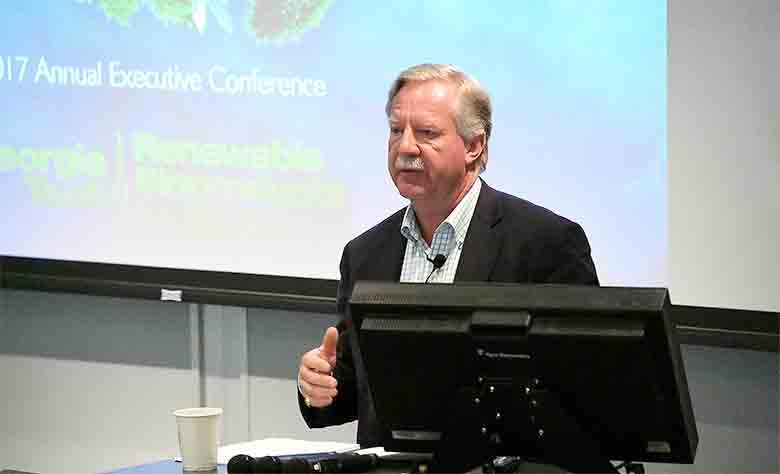
Biomaterials are ripe for innovation: Domtar
April 17, 2017
By Domtar
April 17, 2017 - Companies in the wood-fiber industry are modern-day prospectors of the forest, Domtar President and CEO John D. Williams said at Georgia Institute of Technology. He presented a broader vision of the industry’s future in biomaterials while giving the keynote address at the Renewable Bioproducts Institute’s Executive Conference in March.

“Wood fiber is the age-old wonder material that is seemingly new again,” Williams said. “Its inherent attributes — it’s renewable, sustainable, carbon-neutral, and cost-competitive — are driving exciting new developments. There are some useful lessons as the Renewable Bioproducts Institute prepares to support the industry’s next great transformation: unlocking and recombining the chemical building blocks of trees in new and interesting ways to make advanced, sustainable biomaterials. The challenge is to demonstrate that we have the skills to find the emerging opportunities and to play in that value chain.”
Growing resources today for a sustainable tomorrow
Williams’ presentation offered a look at Domtar’s evolution and innovation in using trees sustainably to manufacture products that people rely on every day. His remarks fit the annual conference’s theme, “Growing Resources Today for a Sustainable Tomorrow: People, Technologies and Ideas.”
Williams noted that Domtar or one of its predecessor companies was the primary inventor of at least three of the technological advances featured in the Museum of Papermaking.
“The point is we have a rich history of innovation,” Williams said. “So relax, and be confident.”
As prospectors of the forests, surrounded by opportunities to explore and develop, industry leaders and partner research institutions must think beyond the short term and carefully consider opportunity costs in this time of transformation.
Domtar is using scientific research, business analysis and decision-making tools to help the company navigate through hundreds of new biomaterials opportunities.
The company has mapped potential in five biomaterials areas:
- Lignin-based products
- Fiber-based products
- Extractives and volatiles-based products
- Thermochemical conversions
- Cellulosic derivatives, such as convertible sugars
Developing biomaterials with a long future in mind
Wood fiber is a target-rich environment, Williams said, but it is important to build a culture that isn’t afraid of necessary endings. “We must not let pride, or over-confidence, or fear of failure result in self-imposed restrictions to stay one course when so many paths are calling.”
After Williams’ presentation, graduate and undergraduate students presented their biomaterials research and discussed industry engagement in the student experience. Company representatives learned more about endowed research in the Renewable Bioproducts Institute’s three strategic areas: pulp, paper and packaging; biorefining and chemicals; and biocomposites and nanocellulose.
Williams urged the audience to move ahead with a long future in mind.
“The purpose of a research organization is not to deliver short- and medium-term results,” he said. “The advantage of a world-class research institution is its ability to operate untethered from today’s short-term business needs. So, as you plan your budgets, resist the temptation to spread your resources evenly across different planning horizons. Go long.”
Find out more about John D. Williams’ visit to Georgia Tech’s Renewable Bioproducts Institute.
Print this page